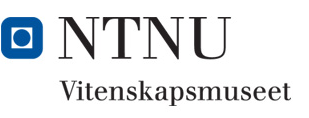Viten fra naturen
Nye ansikt: Ny PhD-kandidat Katariina Vuorinen (tekst på engelsk)
We continue our series on new additions to the Museum with Katariina Vuorinen, a Finnish student who started at the Museum this October.

Where are you from?
I’m from Turku, in Southern Finland. I went to the University there, where I did my Bachelors and Masters.
What did you do write your Master’s thesis on?
It was a repetition of vegetation study done originally in Northern Finland by Lauri Oksanen and Risto Virtanen. It was a community analysis study, and I looked at the effects of climate change on plant communities. They had recorded vegetation in plots along a series of transects on a mountain in Northern Finland. We continued the study and looked at the changes in vegetation. We had good climate data from the area. It was a little speculative, there were some changes, but the main challenge is that you can never be sure if they are changes from the climate or from herbivory.
The results were interesting, particularly for lichens. Usually when you see a decline in lichens you expect that it has something to do with reindeer grazing, but there really wasn’t much of a change in reindeer numbers in that area. And the characteristics of the lichen species that had changed the most indicated that the changes were probably related to climate change. So we concluded that the climate was having an impact.
How did you find this position?
I got a mail from a colleague, and the position looked perfect. It was a great continuation of my Master project. The project is with James Speed, disentangling the effects of herbivory and climate, so very close to what I was doing in my Masters.
What sort of data are you working with?
I have lots of fieldwork lined up, and then we’ll be using quite a lot of data that’s already there. I have planned trips to Canada, Iceland and Scotland, and also here in Norway. There’s lots of vegetation data, plus herbivory data too. It should be fun. I’ve already collected samples in a pilot study in Scotland. It’s started really well.
How have you settled in at the museum?
I’ve settled in quite well. It’s an amazing environment, everyone’s so nice. In many respects it’s a dream come true. I’m really looking forward to the next three years.
I also like Trondheim a lot. More than Turku. It’s also coastal, but it’s flat. I actually did a lot of my fieldwork in Northern Norway during my Masters. I love the landscape.
The Museum wishes Katariina the best of luck over the coming years.
